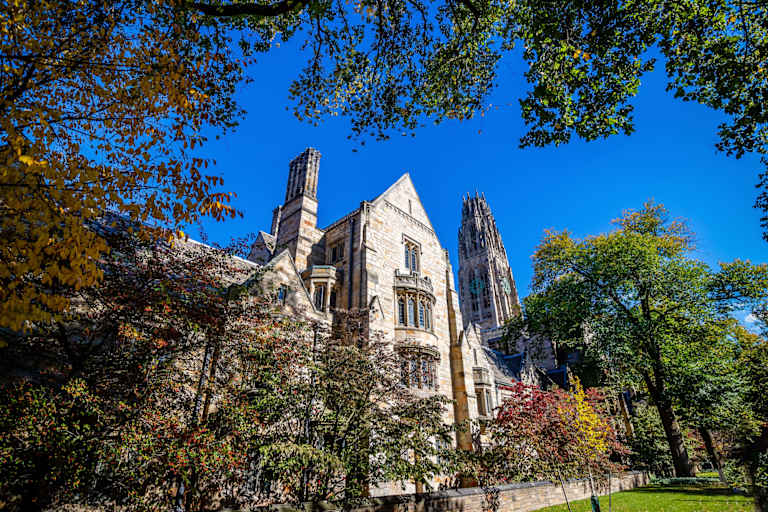What Is the Financial Aid Office?
- The financial aid office manages all forms of financial aid for college.
- The office walks students through the aid application and distribution process.
- Financial aid advisors help students take out loans and make a plan to pay for school.
- Many financial aid offices also provide emergency aid for students.
Most college students rely on financial aid. In fact, 86% of first-year, full-time undergraduates in 2018-19 used some form of financial aid to pay for college. As a result, many institutions have an entire office devoted to financial aid education and problem-solving.
The financial aid office is a great resource for students figuring out how to pay for college. But many students have no idea where the financial aid office is located on campus or what it does. And that can mean missing out on scholarship opportunities and financial aid counseling.
What Does the Financial Aid Office Do?
The financial aid office helps students access loans, grants, and other forms of financial aid. The office also makes sure students receive their financial aid disbursements.
For example, after applicants fill out the Free Application for Federal Student Aid (FAFSA), the financial aid office receives their financial information. College financial aid advisors then put together a package of federal loans, institutional aid, and other funding sources to cover unmet needs. Students receive a financial aid offer letter from the office detailing their options.
In addition to managing financial aid offers, the office provides information on scholarships and helps students deal with any problems related to their financial aid paperwork or distribution. Financial aid advisors can also recommend strategies to help make college more affordable.
7 Common Reasons Students Visit the Financial Aid Office
Students visit the financial aid office for all kinds of reasons. While some financial aid business can take place remotely, other circumstances require an in-person visit.
Since the start of the COVID-19 pandemic, many financial aid offices now offer virtual visits to handle the following reasons for going to the office.
1. Review Financial Aid Offers
Colleges send out financial aid offer letters that detail the types of aid students can receive. However, students don’t need to accept all the aid in the offer.
Students can visit the financial aid office to discuss their aid package. Financial aid advisors will then recommend how to prioritize forms of aid to limit debt.
2. Sign Loan Paperwork
When college students take out loans, they can either sign in person or electronically. Why would students visit the financial aid office to sign the paperwork? It’s a great option for students unclear about the terms of the loan or those who want additional information before signing.
3. Completing Entrance/Exit Counseling
At most colleges, borrowers need to complete entrance counseling before taking out a loan. While some schools offer online entrance counseling, others may require an in-person visit with financial aid counselors at the office of financial aid.
Borrowers who are graduating or leaving college early must complete exit counseling. The exit counseling walks through students’ repayment obligations and monthly payments. As with entrance counseling, some schools allow online exit counseling, while others require a visit to the office.
4. Reapply for Institutional Aid
Continuing students may need to visit the financial aid office annually to reapply for aid and/or sign paperwork. The financial aid office can also recommend funding sources for current students.
5. Learn About Scholarships and Grants
Colleges award scholarships and grants through their institutional aid programs. The office of financial aid recommends options based on the student’s circumstances. It also tracks outside scholarships and grants available to students. Students can visit the office to learn more about their options.
6. Resolve Problems With Aid Distribution
Students typically receive financial aid disbursements multiple times a year. But sometimes grants, loans, and scholarships don’t arrive on schedule.
Several factors might hold up disbursements. For example, first-time borrowers may need to wait 30 days after the start of the term. The financial aid office can help with any disbursement problems.
7. Apply for Emergency Aid
Many schools offer short-term, emergency aid programs for students experiencing financial hardship. Often, the financial aid office manages the emergency aid program, including the application process and the distribution of emergency aid.
Why Might You Meet With a Financial Aid Advisor?
Financial aid advisors work in the financial aid office, but they do more than simply distribute aid. They also advise students and their families on how to pay for college.
That means advisors connect students with scholarship opportunities, review which financial aid offers to accept, and create financial aid plans to minimize debt. For example, advisors can instruct borrowers on how to save money by prioritizing federal subsidized loans.
Financial aid advisors also help students complete paperwork related to their aid package. When students run into problems, advisors can recommend solutions. Students can ask advisors about reapplying for renewable scholarships, identifying new scholarship opportunities, and extending the student loan grace period after graduation.
If you’ve never been to the financial aid office at your school, use your college’s official website to locate it on campus. For most students, it’s worth the time to visit. After all, a trip to the financial aid office may mean graduating with less debt.
Explore More College Resources

How to Appeal Financial Aid to Get More Money
Didn’t receive enough financial aid to attend your target college? Consider submitting an appeal letter to explain your situation and request more money.

by Tyler Epps
Updated May 23, 2023


